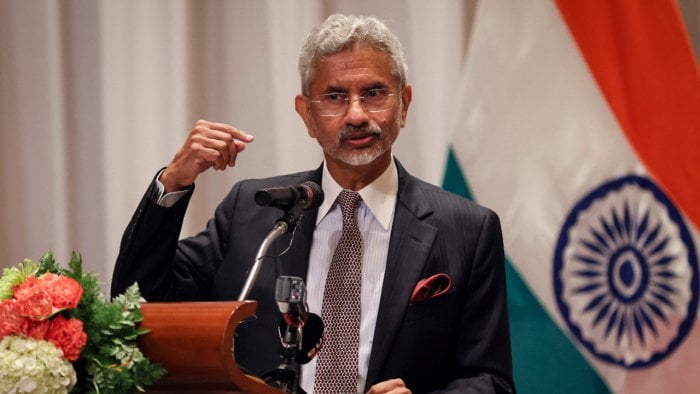Sources in the security establishment say that China has put more than 70,000 troops along the border in eastern Ladakh. They also say that China is still building infrastructure inside India’s claimed lines on the strategic Depsang Plains and at other points where both sides have partially stopped fighting.
External Affairs Minister S. Jaishankar said on Monday that India had sent out its largest-ever LAC deployment to counter the Chinese buildup in Ladakh. However, security officials said that China had sent out drones to watch Indian troop movements.
A security official with the Union home ministry said, “The Chinese have put up a large number of surveillance drones over the buffer zones created within India’s claimed lines (during the partial disengagements) to keep an eye on the movements of Indian troops.”
He also said, “A recent assessment of the situation on the ground suggests that China has put over 70,000 soldiers along the LAC in eastern Ladakh and is continuing to build up.” They have been building more roads, helipads, and military camps inside the lines that India says belong to India on the Depsang Plains, where they have so far refused to leave.
He also said that the Chinese have been “moving more people and equipment into the Galwan Valley and other areas where the two armies are at a standoff.” Both armies have partially pulled back from these areas.
A defence ministry official said that, because of the threat from the Chinese army, the Indian army had sent out equal numbers of troops. “The biggest worry is that they (the Chinese) are still building a lot of infrastructure inside the lines that India says belong to it at Depsang Plains,” he said.
Veterans of the military and security experts have been warning for months that China may be planning to keep the 1,000 square kilometres of India-claimed land it is thought to have occupied since May 2020 by declaring a new status quo on the LAC.
As part of the disengagement agreements, Indian and Chinese troops have moved back the same amount from the flashpoints in the Galwan Valley, Pangong Lake, Hot Springs, and Gogra, leaving demilitarised “buffer zones” in between. This means that the Chinese are still inside the lines that India says they crossed, while India has lost control of more land that it claims as its own.
“The Chinese already control the high ground in the Galwan Valley and around Pangong Lake, which gives them a huge military and strategic advantage. They won’t leave the Depsang Plains,” said a former lieutenant general.
The former lieutenant general said, “The creation of the buffer zones shows how the Chinese have forced India to agree to their new interpretation of the LAC.” This has important repercussions.”
Veterans of the military have criticised the Narendra Modi government for “ceding” more land to the Chinese by agreeing to buffer zones instead of demanding that things go back to the way they were before the Chinese invasion. In the eastern sector, the Chinese are also building a lot of infrastructure, like towns and villages, close to the border. On December 9, Chinese soldiers tried to cross the border in the Tawang sector of Arunachal Pradesh, but Indian troops stopped them. During the fight, 15 to 20 Indian soldiers were hurt.
